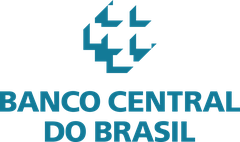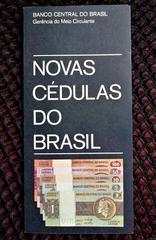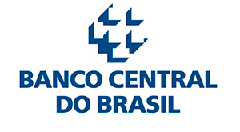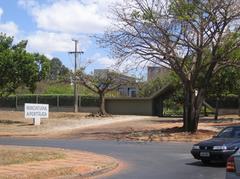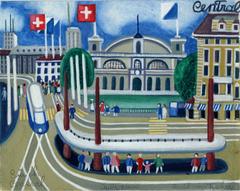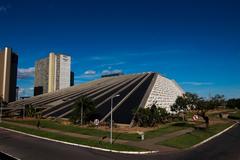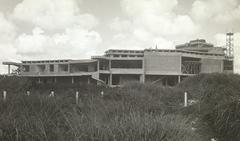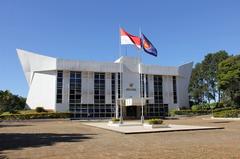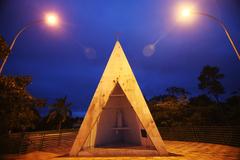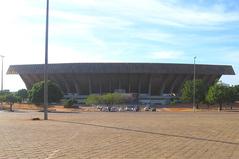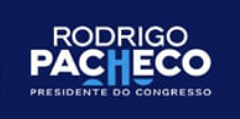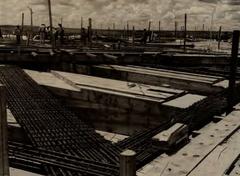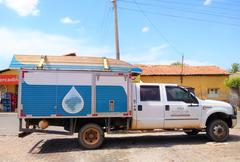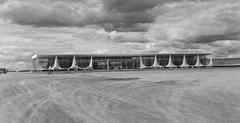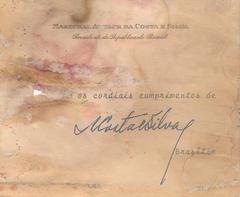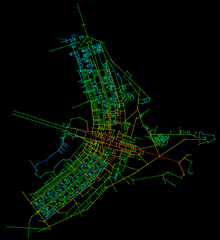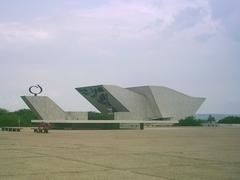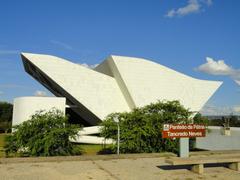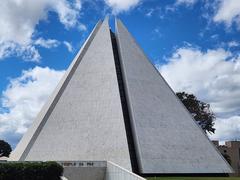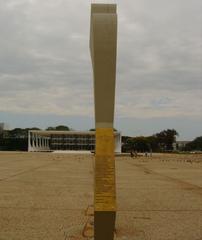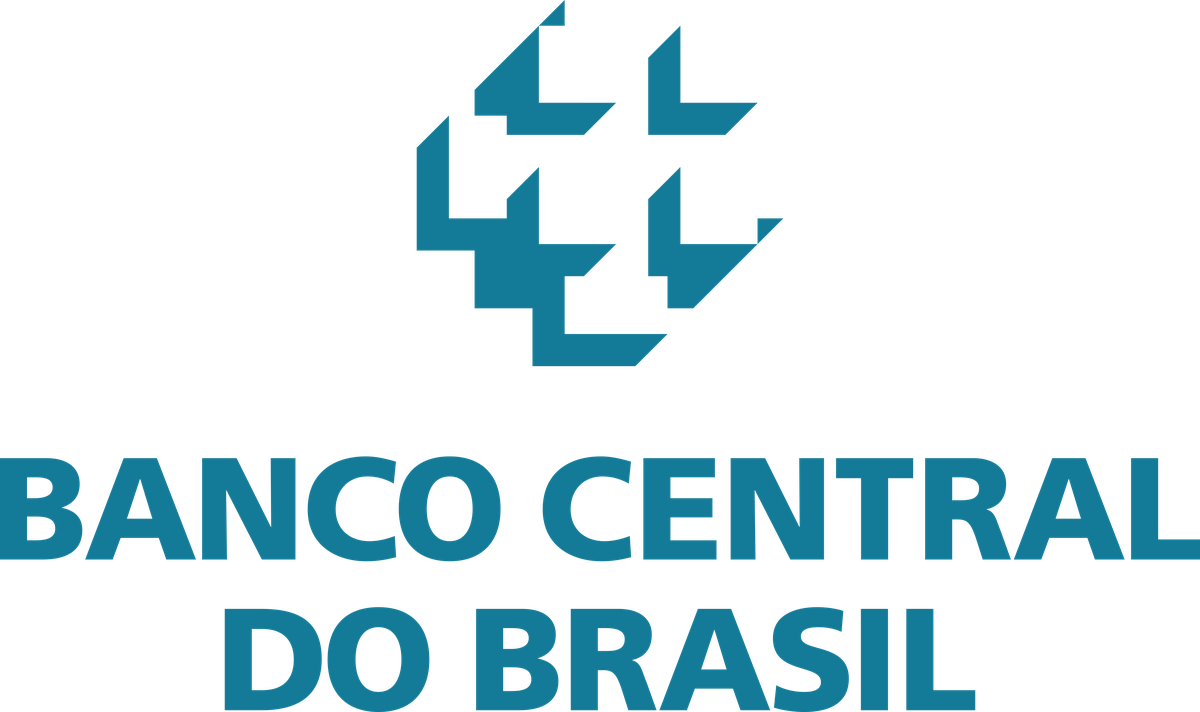
Central Bank of Brazil Brasília: Visiting Hours, Tickets, and Historical Significance Guide
Date: 14/06/2025
Introduction
In the heart of Brasília stands the Central Bank of Brazil (Banco Central do Brasil, BCB)—a pivotal institution shaping the country’s financial future and a distinctive architectural landmark. Established in 1964 to unify monetary policy and ensure currency stability, the BCB has grown through key milestones, such as the adoption of inflation targeting in 1999 and the achievement of operational autonomy in 2021. Its evolution mirrors Brazil’s ongoing commitment to sound economic governance (Central Banking, Agência Brasil).
Beyond its economic role, the Central Bank headquarters is a modernist icon, designed with the visionary principles laid out by Brasília’s master planners Lúcio Costa and Oscar Niemeyer. Its bold concrete-and-glass structure not only defines the Setor Bancário Sul district but also reflects the city’s ambition as a symbol of progress (Rough Guides, Imaginoso).
A highlight for visitors is the Museu de Valores (Museum of Values), which houses a remarkable collection of Brazilian coins, banknotes, and gold nuggets, including the famed 60kg specimen from Serra de Pelada. Although the museum is temporarily closed as of June 2025, the site remains an essential stop for anyone exploring Brasília’s rich history and modernist architecture (BCB Museum Collections, WhichMuseum).
This comprehensive guide details the Central Bank’s history, architectural significance, practical visitor information, and tips for making the most of your trip to Brasília.
Contents
- The Central Bank of Brazil: History and Economic Role
- Founding and Mandate
- Policy Innovation and Autonomy
- Architectural and Cultural Significance
- Modernist Vision and Urban Integration
- Design Features and Critique
- Visitor Information
- Location and Access
- Visiting Hours and Tickets
- Guided Tours, Accessibility, and Security
- Highlights of the Museu de Valores
- Photography Guidelines
- Travel Tips and Nearby Attractions
- Frequently Asked Questions (FAQ)
- Conclusion and Final Recommendations
- Sources
The Central Bank of Brazil: History and Economic Role
Founding and Mandate
Created in 1964, the Central Bank of Brazil unified the nation’s monetary policy at a time of economic instability. The 1988 Constitution solidified its authority, granting it exclusive rights to issue currency, while safeguarding its operations from undue political influence (Central Banking).
Policy Innovation and Autonomy
In 1999, the BCB embraced inflation targeting, using transparent annual targets to guide policy and maintain price stability (Agência Brasil). Complementary Law No. 179, passed in 2021, granted the Central Bank operational autonomy—allowing it to act independently and resist short-term political pressures. The bank’s primary functions remain ensuring currency stability, supervising the financial system, and fostering economic well-being.
The BCB also oversees the Selic rate, Brazil’s key interest rate, and has been proactive in responding to inflationary pressures, even raising rates to levels not seen in decades (CNBC). It has pioneered innovations such as Pix, the instant payment system now used by millions (Central Banking).
Architectural and Cultural Significance
Modernist Vision and Urban Integration
The Central Bank’s headquarters is a prime example of Brasília’s modernist legacy, rising 24 stories above the Setor Bancário Sul. Its design—characterized by robust geometric forms, vertical concrete fins, and reflective black glass—echoes the ideals of structural clarity and integration with urban space (Imaginoso, Curbed).
Strategically located within the UNESCO-listed Plano Piloto, the building forms part of the city’s administrative core, adjacent to other government landmarks. This placement reinforces the Central Bank’s symbolic status as a guardian of national stability (HDM LTH, ArchDaily).
Design Features and Critique
The building’s imposing silhouette, extensive use of concrete, and interplay of light and shadow are hallmarks of Brazilian mid-century architecture. While admired for its monumental presence, critics sometimes describe it as stark or isolated within Brasília’s vast urban plan (Curbed). Nevertheless, it remains a powerful emblem of Brazil’s economic aspirations.
Visitor Information
Location and Access
- Address: Setor Bancário Sul (SBS) Quadra 3 Bloco B, Brasília, Federal District.
- Getting There: The headquarters is accessible by bus, taxi, or ride-sharing. The city’s metro does not serve the Monumental Axis directly, so surface transport is recommended for convenience (Passporter).
Visiting Hours and Tickets
- Museum Status: As of June 2025, the Museu de Valores is closed for renovation, with no announced reopening date (WhichMuseum, Numista).
- Typical Hours (when open): Monday to Friday, 9:00 AM–5:00 PM; closed weekends and holidays.
- Tickets: Admission is free for all visitors.
Guided Tours, Accessibility, and Security
- Guided Tours: Available by appointment when the museum is operational. Tours provide deep insights into monetary history and the bank’s architecture. Languages may include English and Spanish.
- Accessibility: The building is wheelchair accessible, with elevators and adapted facilities.
- Security: Expect airport-style screening. Bring valid ID (passport or national ID). Photography may be restricted in some areas.
Highlights of the Museu de Valores
- Numismatics: Coins and banknotes from colonial times to the present.
- Gold Nuggets: Including the record-breaking Canaã gold nugget.
- Art Collection: Modernist paintings, engravings, and sculptures by Brazilian artists.
- Interactive Displays: Exhibits explaining economic reforms and currency evolution (BCB Museum Collections).
Photography Guidelines
- Photography is permitted in most museum areas, but flash and tripods are not allowed.
- Exterior shots of the Central Bank building are popular with architecture enthusiasts.
Travel Tips and Nearby Attractions
- Combine Visits: The Central Bank is near major attractions, including:
- National Congress
- Cathedral of Brasília
- JK Memorial
- Palácio do Planalto
- Itamaraty Palace
- Caixa Cultural (art gallery) (TripJive, Next Stop Brazil)
- Transport: Use taxis, buses, or ride-sharing to navigate Brasília’s expansive layout.
- Payment: Credit/debit cards are widely accepted. Pix is common locally but not accessible to most foreign visitors (Numista).
- Dress Code: Smart-casual attire is appropriate when visiting official buildings.
- Safety: Tourist areas are generally safe; standard precautions apply.
Frequently Asked Questions (FAQ)
Q: Is the Museu de Valores currently open?
A: No, as of June 2025, the museum is temporarily closed. Check the official website for reopening updates.
Q: What are the typical visiting hours?
A: When open, Monday to Friday, 9:00 AM–5:00 PM; closed weekends and holidays.
Q: Is admission free?
A: Yes, entrance to the museum is free.
Q: Are guided tours available?
A: Yes, by appointment when the museum is operational.
Q: Is the building wheelchair accessible?
A: Yes, the headquarters and museum are fully accessible.
Q: Can I take photos inside?
A: Photography is permitted in most areas, but flash and tripods are not allowed.
Q: What other historical sites are nearby?
A: The National Congress, JK Memorial, Cathedral of Brasília, Palácio do Planalto, Itamaraty Palace, and Caixa Cultural are all within easy reach.
Conclusion and Final Recommendations
The Central Bank of Brazil stands at the intersection of economic policy, architectural innovation, and cultural heritage. Its modernist headquarters is a must-see for anyone interested in Brasília’s unique urban vision. While the Museu de Valores is currently closed, the bank’s exterior, history, and surrounding landmarks provide rich opportunities for exploration.
For the best experience:
- Stay updated on museum reopening dates via official channels.
- Plan your route to include other modernist and historical sites nearby.
- Download the Audiala app for guided tours and real-time updates (Audiala).
- Follow safety and visitor guidelines to make your visit smooth and memorable.
Sources
- Central Bank of Brazil: Central Bank of the Year, 2023 (Central Banking)
- CMN Publishes Decision Setting Inflation Target 3% for 2025, 2022 (Agência Brasil)
- Brazil Central Bank Hikes Rates to Near 20-Year High, 2025 (CNBC)
- Brasília and the Planalto Central (Rough Guides)
- Central Bank of Brazil Headquarters Architecture (Imaginoso)
- Brasília Urban Planning and Architecture Design (Curbed)
- Museu de Valores Collections, Central Bank of Brazil (BCB Museum Collections)
- Museum of the Central Bank of Brazil (WhichMuseum)
- Exploring Brasília’s Top Attractions (TripJive)
- Next Stop Brazil: Brasília Destinations (Next Stop Brazil)
- Audiala App for Guided Tours (Audiala)
- Official Central Bank of Brazil Website (Official Central Bank Website)
